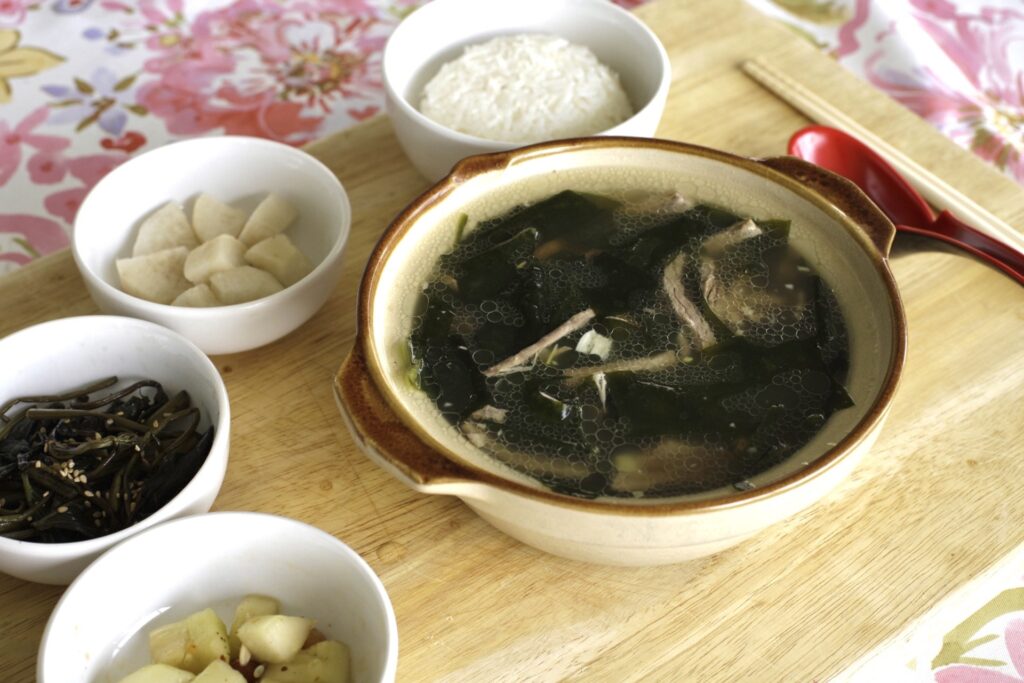AAPI Voices: When Food is a Love Language
We asked AAPI members of our community what food and love mean to them.
We asked AAPI members of our community what food and love mean to them.

Food is a powerful way to show love. That’s especially true in many Asian American and Pacific Islander (AAPI) cultures, where it’s more common to show care through actions rather than words—and especially through food.
Ivy Kwong, LMFT, a psychotherapist who specializes in AAPI mental health, told the mental health publication Verywell Mind:
“Food is the Asian love language. It’s the cut fruit, sharing dishes, and sending you off with containers of leftovers. It’s making you your favorite dish, stuffing you and offering you seconds and thirds and fourths, and asking whether you’ve eaten yet or worrying if you’re not eating well.”
We’ve heard stories like this one firsthand from countless members of our community, from the service members who bring family recipes to class, to the students who share their food traditions with their peers, to the AAPI farmers committed to traditional ingredients. And in celebration of AAPI Heritage Month, we’d like to share some of those stories with you.
We asked AAPI members of the FoodCorps community about their experiences celebrating food as a love language all year long. Here’s what a few folks told us.
“My family has always shown me their love through food. Food is love. Food is necessary for survival, and not only as a means of eating nutrients. Food tells the story of our people—our history, culture, creativity, joy, and struggle. Tasting the flavors and learning recipes passed on by my family and Hakka Chinese and Filipino ancestors is an act of love, resistance, and preservation. My favorite food memory, and the earliest memory I can recall, is eating Sinigang Na Hipon with my Lolo (my maternal grandfather). Sinigang Na Hipon is a sour tamarind-based Filipino soup with head-on shrimp and veggies served with white rice. This dish has indigenous roots and was eaten by Filipinos long before Spanish colonization. Whenever I miss home or I’m feeling down, I know I can make and eat this soup and be transported to that dinner table with my Lolo, to the kitchen where my Lola (my maternal grandmother) or my mom would make it, or to the Kamayan-style family feasts we would host where this soup would make a special appearance alongside a diverse array of other delectable bites. This dish brings me so much joy.”

“Food is spicy, colorful, tasty, and mostly nutritious or purposeful in nourishing the body. Delicious and/or nutritious food speaks to my heart. If you cook for me, I might fall a bit in love with you. Gujarati food is a part of my cultural heritage that I feel most passionate about preserving, because it honors my grandma and the way she’d often cook an amazing full course lunch for over 15 people daily in Nairobi, Kenya. When I visited her one summer, I loved learning to make chevdo, a popular savory/sweet snack made of spiced, fried, and dried lentils, potatoes, and nuts, with her.

“After the birth of each of my three kids, my mom would come to the hospital and deliver my first meal. She would bring miyeok guk (Korean seaweed soup), rice and banchan (small Korean side dishes). Miyeok guk is often served to new mothers and it’s traditional to have it on your birthday to honor your mother. The legend is that Koreans long ago would watch mother whales eat seaweed after giving birth. Koreans felt it must be nourishing to eat seaweed and adopted the tradition. This meal will always mean love to me. I cannot tell you how delicious that first spoonful of miyeok guk was in the hospital and how nourished and loved I felt eating that meal.”

Read more about AAPI experiences with food and love in “‘Have You Eaten Yet?’: Food is the Ultimate Asian Love Language,” by Sayaka Matsuoka.

Our 2024 Child Nutrition Policy Year in Review

9 Thoughtful Holiday Gifts Made by FoodCorps Alumni

The Policy Brief, Fall 2024: After the Election